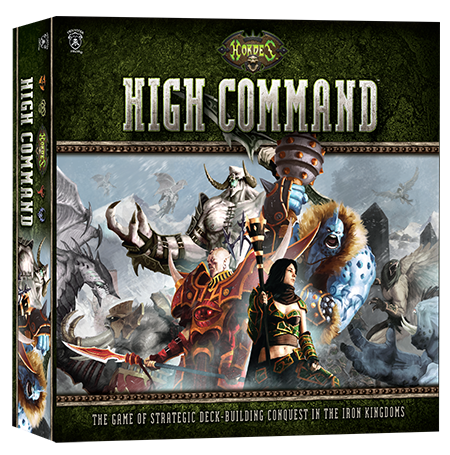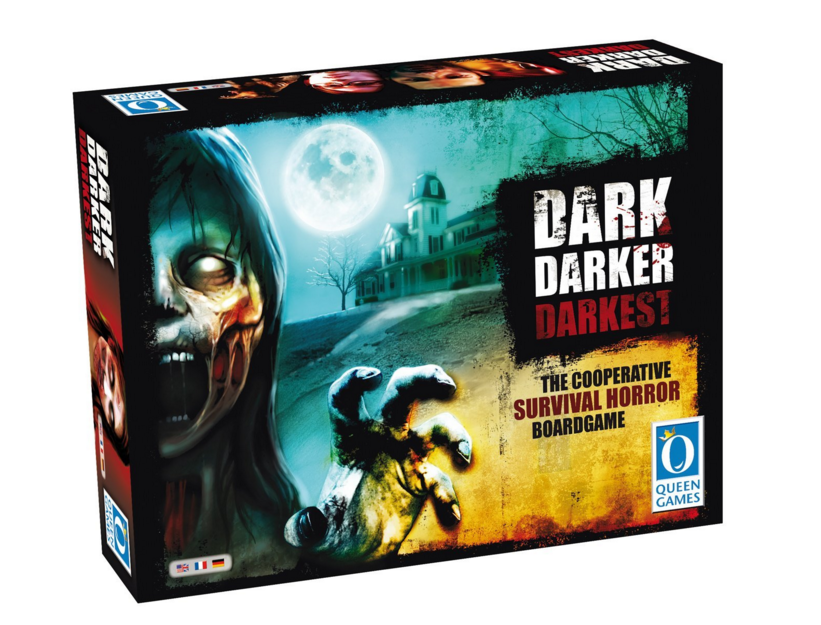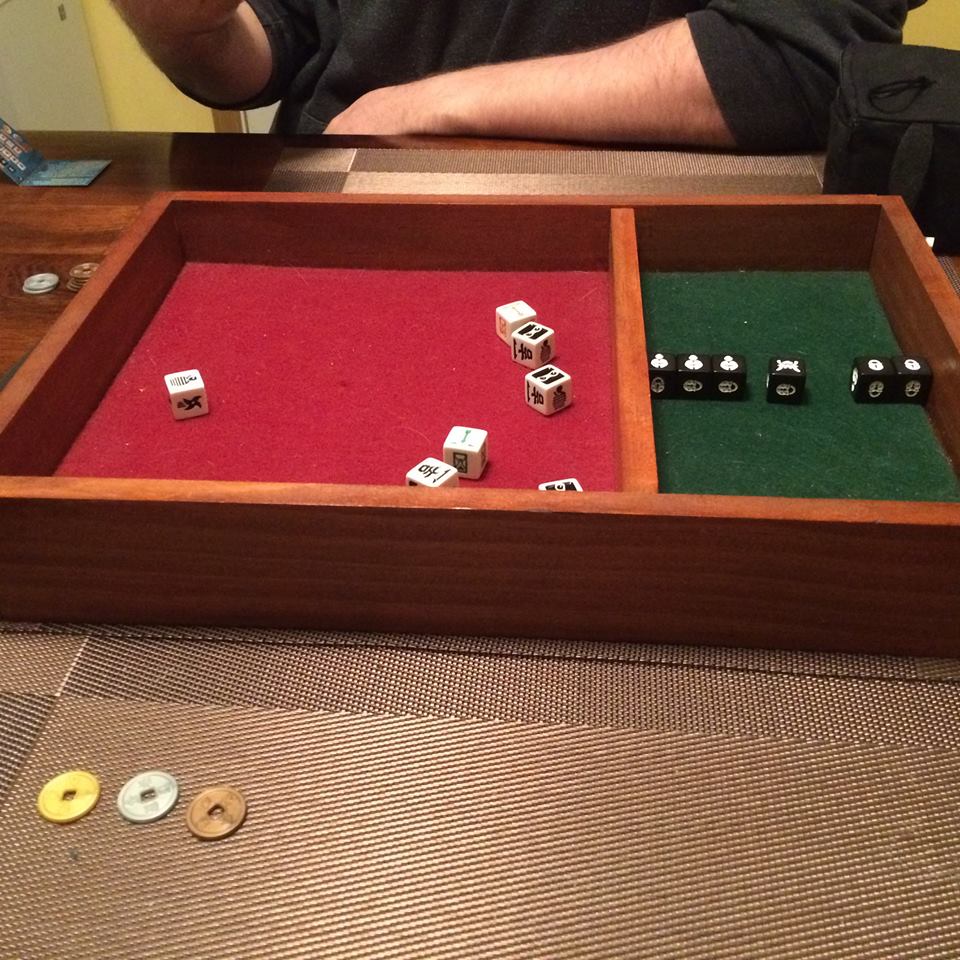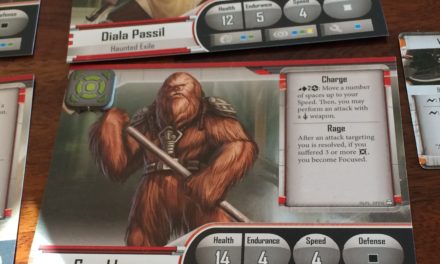Due in large part to Tabletop with Wil Wheaton, board gaming has seen a renaissance in recent years with several different types of games becoming very popular. One of them is the deck builder. In the most general terms, deck building games are alike in that the players begin with some resources, usually in the form of a starting deck, and can use those resources to scuffle with their opponent or acquire additional cards for their deck.
Because the deck is both the purchasing tool and the mechanism to score points against your opponent and win the game, most deck building games require a balance of strategy between acquisition and attacks.
Overview of Hordes: High Command
Hordes: High Command acknowledges the need for the balance and helps players get a start on their card acquisitions by making it impossible to start the face-to-face showdown until the third round of the game. But players better not wait too long after that, as the game will end in a maximum of 11 rounds.
The game, from Privateer Press, is based on its miniatures game Hordes and the four factions in the box set are core factions of the miniature game: Circle of Orboros, Trollblods, Legion of Everblight and Skorn. Additional factions are added in the expansions to High Command and much like the miniatures game, it can also be played with Privateer Press’ Warmachines, from the Warmachine: High Command boxed set or expansions.
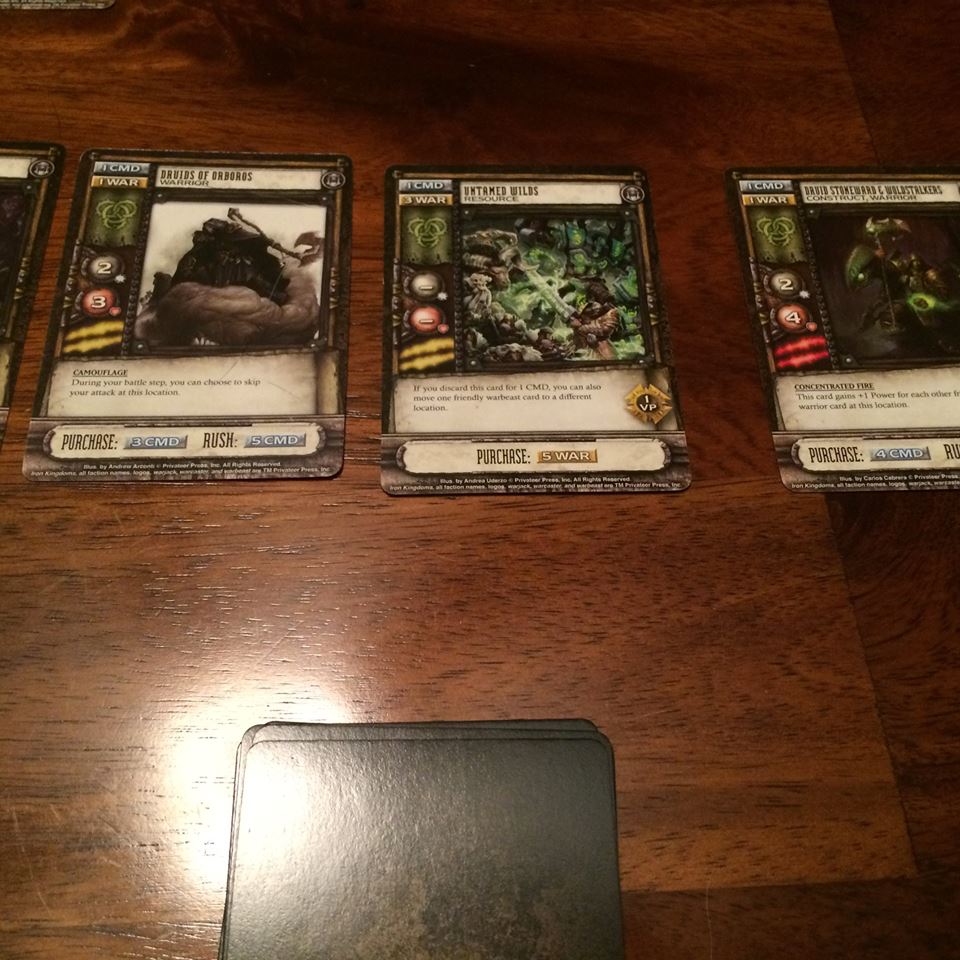
The game was published in 2013 and you can often pick up the basic box in the $10-$15 range online. The game is designed for two to four players, but most reviewers agree it works best with just two players.
Hordes: High Command Game Play
Players begin by choosing the faction they will play. Each faction has five war casters, the mages summoning these might fighting beasts, to choose from. Players choose three of the five from their faction to use in the game. Each war caster has two designated colors of cards they are most specialized in summoning.
The options – red, orange, yellow, green, blue and purple – all have slightly different emphasis. Red, is usually more martial, for example, while yellow are quick deployment troops. These color designations only matter for the creation of the player’s resource deck. Each player chooses three colors from among the specialties of his war casters.
The cards of the designated color (12 cards per color) are shuffled together to form the resource deck. These are the cards that the player can buy to add to his deck along the way and can only be purchased by this player. The other player(s) have their own resource deck.
Each player also has their current deck, beginning with the 12 starting resources. With their three war casters in front of them, the first four cards they can buy on display in front of them, and a starting hand of six cards, the players are ready to start the game.
Two other types of cards are winds of war cards and location cards. To start each round of the game, players turn over the top winds of war card. During the initial set up, the first two location cards are also revealed and these are a part of the game-winning objectives.
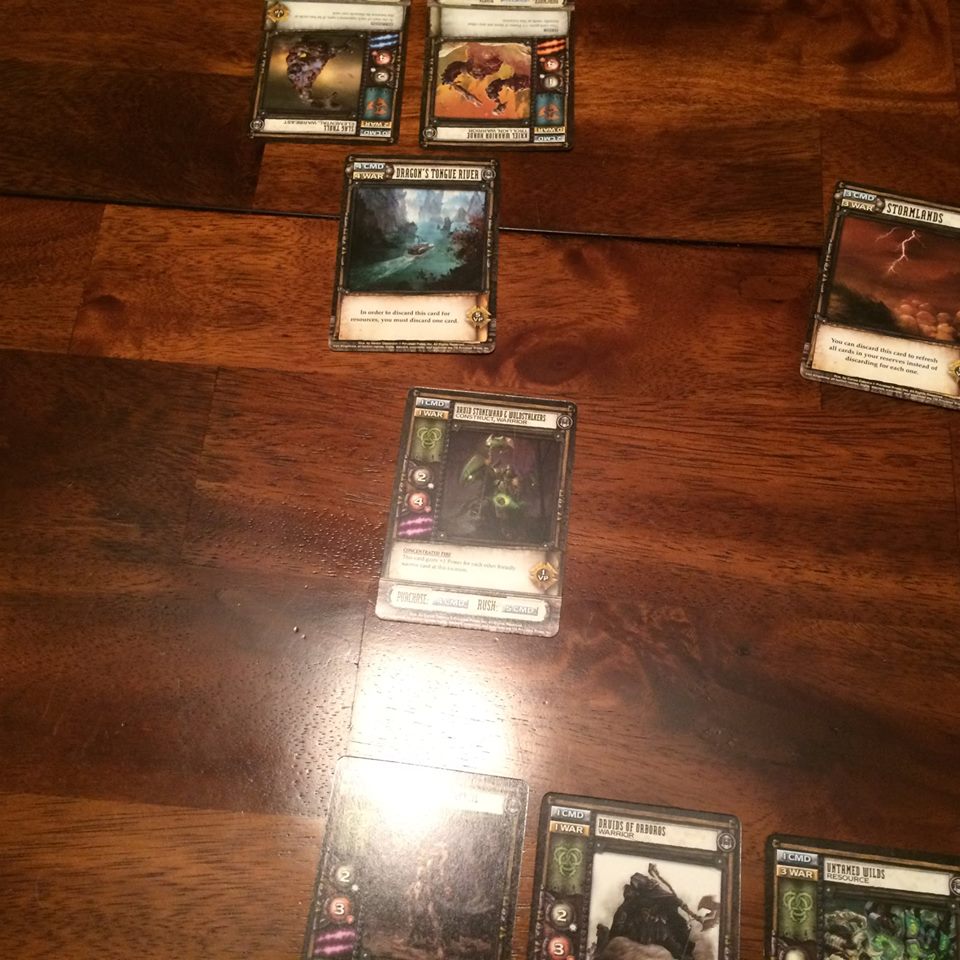
Each time a player wins a location, they add that to their deck. The locations, and some of the base cards from this resource deck, have a victory point value displayed on the card. When the game ends, based on drawing the game-ending card from the winds of war deck, the winner is the person with the most victory points in their deck.
During the first two turns, players discard cards from their hand to gain war or command points. Depending on the type of creature on the card, resource cards cost either command points or war points to buy and add to your deck. Beginning in the third round, players also have the option to pay command or war points to activate creatures in their hands or to rush a card from the available resources line to the battlefront.
Each location represents a battlefront. At the beginning of each player’s turn, the player checks to see if he has two more creatures at a location than the player with the next highest number of creatures. If so, he wins the location. The location is added to his discard pile to become part of his deck and the creatures that won the location are put in an occupying forces pile. These cards are out of game for the rest of the game, but still count towards final victory points.
The old location is replaced with a new one from the deck and then the player may buy or activate cards as she chooses. Once she is finished buying and activating cards, her creatures at the battlefront locations attack the other creatures at the location. Once the battle is resolved, the player must discard down to one card. She then draws six more to her hand and play passes to the next player.
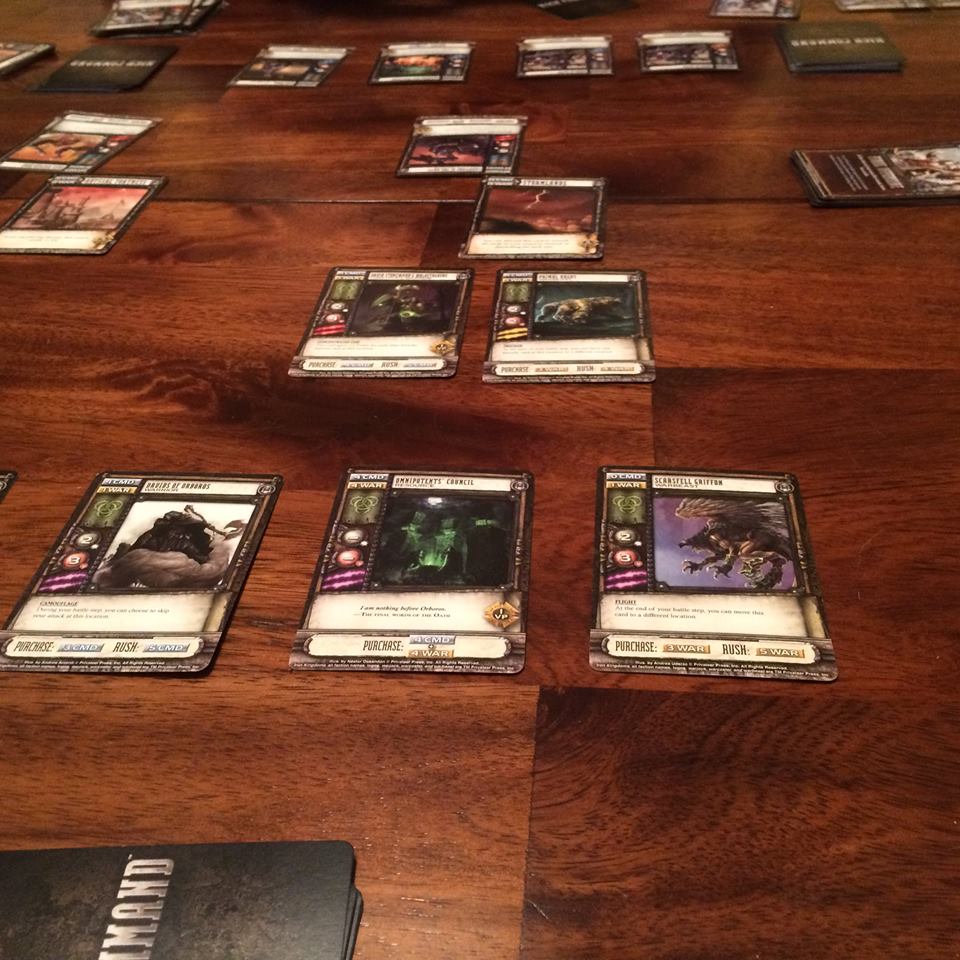
Whenever a player runs out of cards, he shuffles his discard deck and uses it for the next round. Cards that are purchased from the resource line and those defeated in battle, as well as those that are discarded for various game effects, go to the discard pile and become the new deck.
Total Game Play Time: One Hour
Setup for the game, mostly consisting of dividing the cards by faction and color, took about half an hour from the time we opened the box. After the first game, we simply reset the starting setup as we counted victory points. Game play lasted about an hour.
Final Analysis
Hordes: High Command was quick to learn and fun to play. After playing the first round, we immediately played again. After the second game, we went and ordered the expansions. This is definitely a game we will play again soon.
We particularly liked that the game is has a huge number of different combinations between the choices of faction, war casters and creature colors. The basic game rules are very simple, but the balancing act between trying to build up your forces while trying to prevent your opponent from doing the same, makes it challenging as well.

